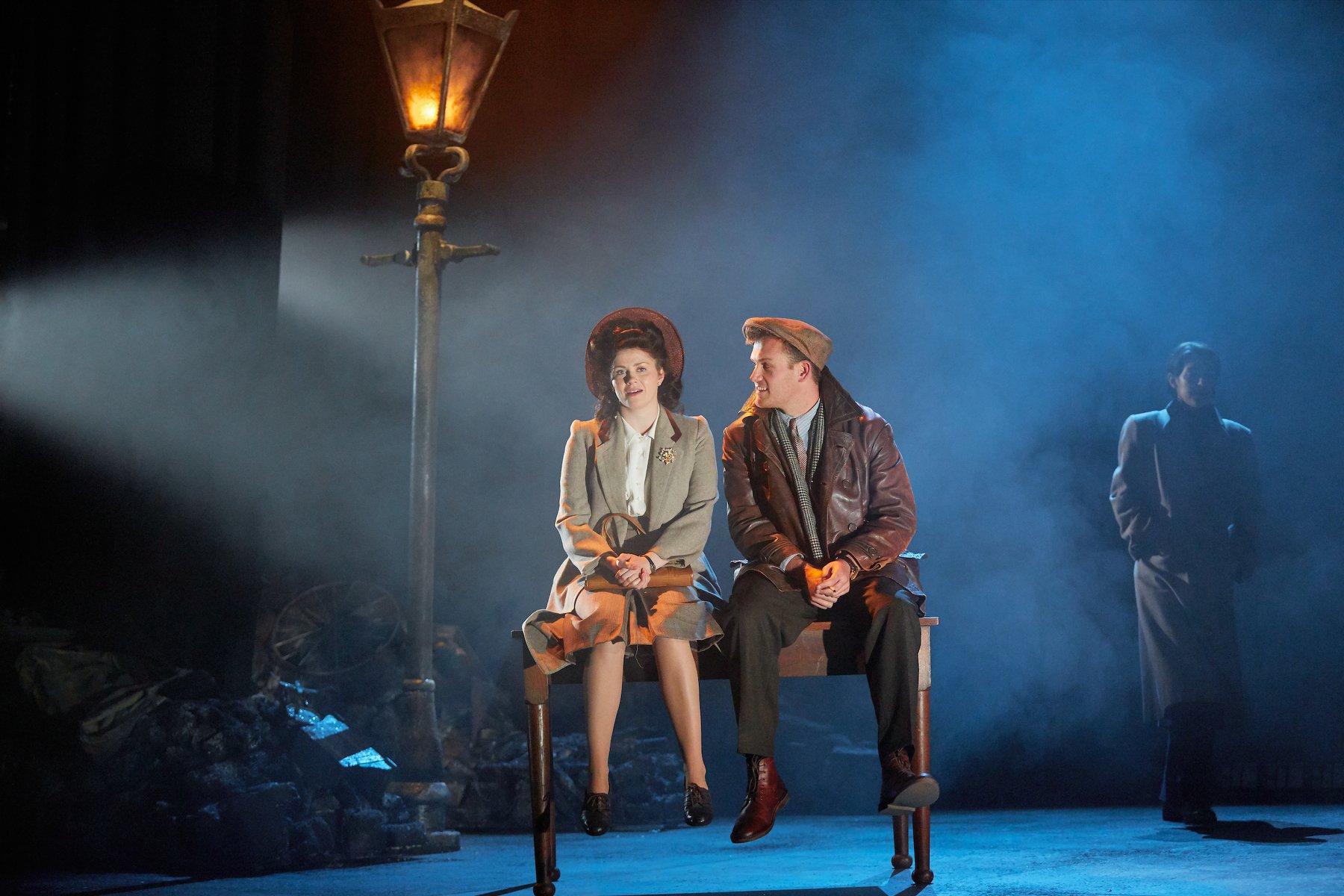
Theatre Review: The Night Watch
JENNY BOOTH REVIEWS HATTIE NAYLOR’S STAGE PRODUCTION OF CRITICALLY ACCLAIMED NOVEL THE NIGHT WATCH
Three standout performances made the stage adaptation of London Blitz story The Night Watch an engrossing piece of theatre.
At Croydon’s Fairfield Halls where the play runs all week, Phoebe Pryce’s portrayal of Kay, a woman left broken and adrift after the war, was arresting from the start.
Kay often goes into cinemas half way through and watches a film’s end before its beginning, reasoning: “People’s pasts, you know, being so much more interesting than their futures.”
This sad statement, which opens the play, explains the back to front way novelist Sarah Waters unfolds her novel, starting in 1947, jumping back to 1944 and then to 1941. Hattie Naylor’s adaptation sticks to the same structure, reaching its climax when a young, confident and quixotic Kay encounters the person who is to break her heart.
As events unfold, the audience gradually understands how all the characters got to where they are in 1947, many apparently trapped in unhappy situations they can’t break out of.
Second of the standout performances was by Lewis MacKinnon as Duncan, a talented boy whose resentful reaction to being sent to die in an “old man’s war” has imprisoned him in a life where his early promise seems all to be wasted. Like Pryce, Mackinnon pulls off the difficult trick of portraying a character convincingly in three different phases of their emotional development.
All the rest of the cast was strong, and mention must go to Mara Allen who makes her professional debut in this production. For me, Louise Coulthard as Viv gave the third performance of the night, as a girl whose hope and enthusiasm for life has been harshly dented.
Alastair Whatley’s stylish direction keeps the play moving along at pace, interleaving one scene with another. Set designer David Woodhead’s rubble heaps; meanwhile the skeleton of a bombed house and Nic Farman’s dark and atmospheric lighting evoke the mood of the Blitz.
Naylor is deft at hinting at plot themes with a well-turned phrase. With every stage adaptation there are some parts of a book that have to be left out, however. Here, sadly, it was the detailed and apocalyptic scenes of destruction that provide an epic backdrop for the drama in the novel. Without them, the play’s ending seems a little tame – and for those unfamiliar with the novel, confusing.
The reappearance in 1947 of Robert Fraser (nicely judged by Sam Jenkins-Shaw) seems to be a catalyst for change, allowing characters to escape their traps; and when Kay gets her ring back at the end of Act 1 the audience hopes that she can find a better future. But as the plot moves backwards, that sense of new possibilities is missing from the end, which seems flat as a result.
⭐⭐⭐⭐
@jennydotbooth / @culturevult
Looking for your festive theatre fix? Check out our comprehensive guide to this years panto season here!






